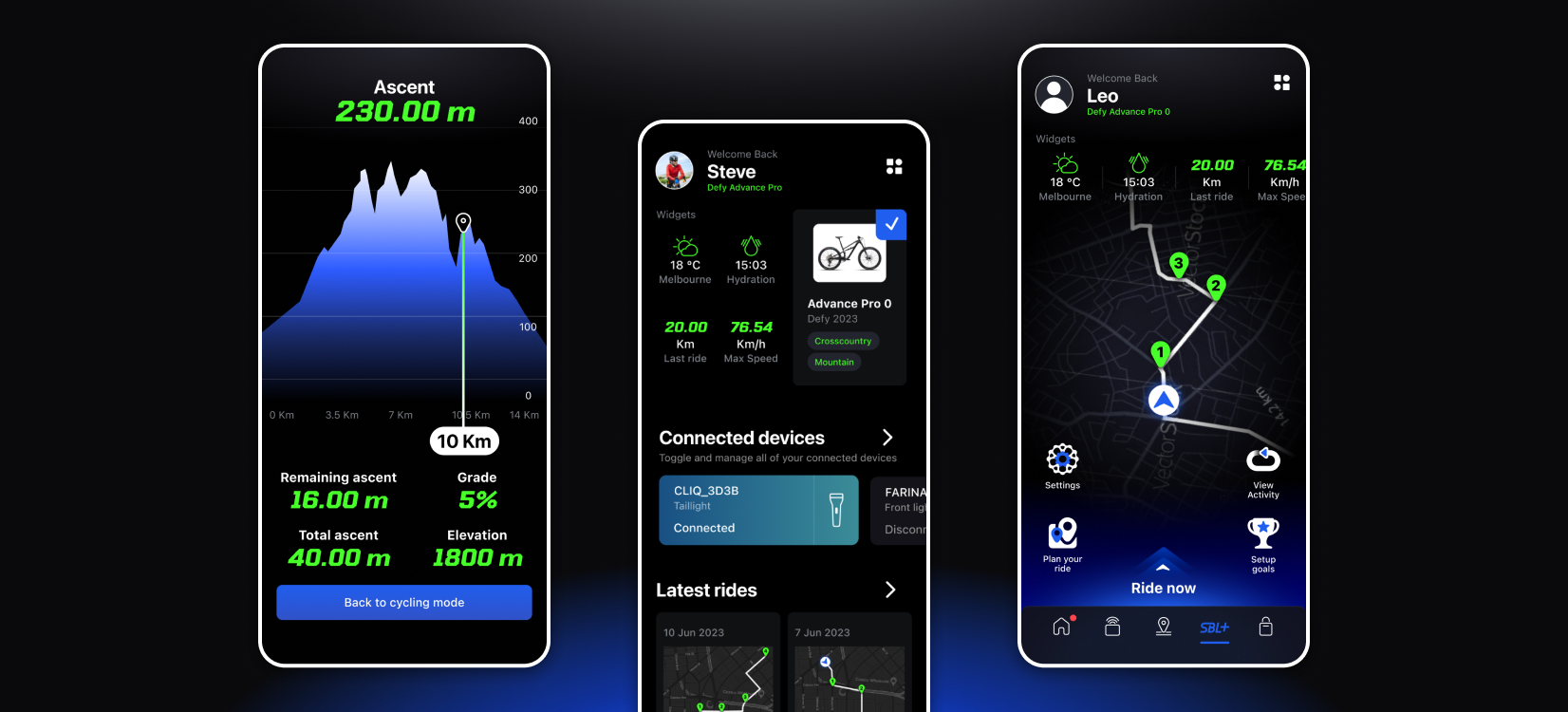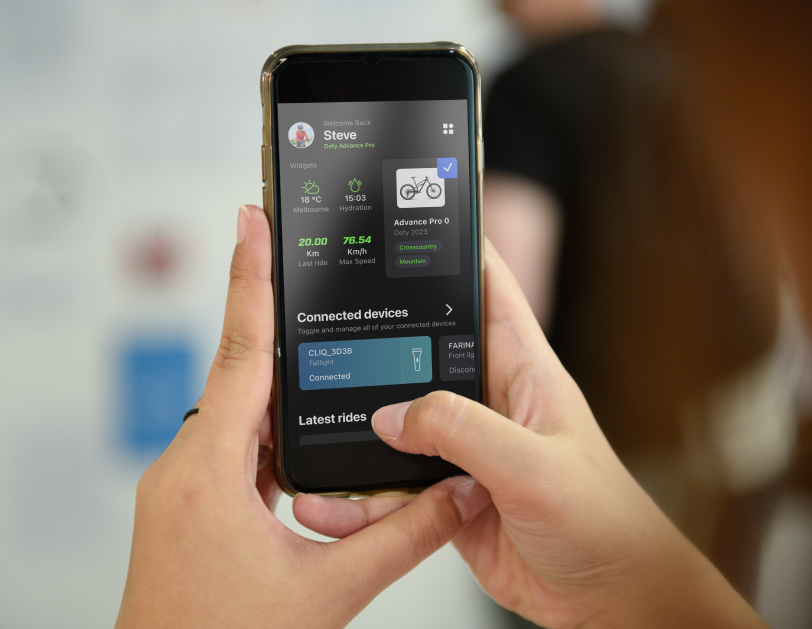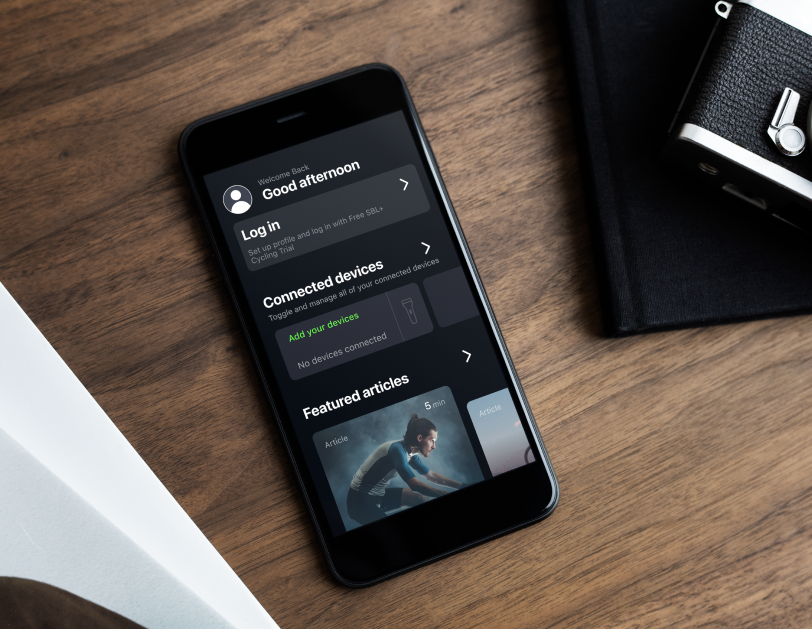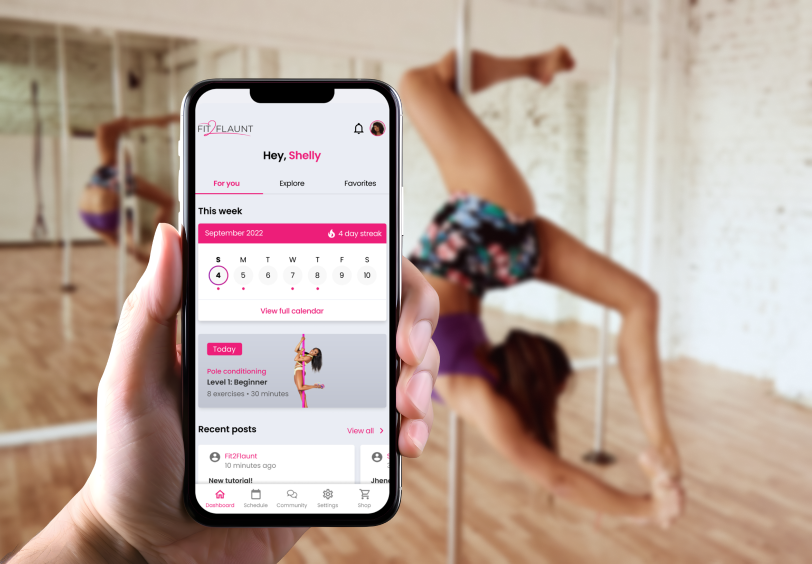
SBL+
Industries : Entertainment, Utility
Service Provided : UUX/UI Research, Development, Support
2K
Users1.5K
Podcast streamed70+
Events createdClient products get whooping growth in sales with 70% using BLE enabled app.
We only collect information for business use as detailed in our Privacy Policy
From Client
SBL+, a prominent Australian company, is at the forefront of innovating bicycle equipment. Their product range, including advanced LED lights, cadence meters, elevation meters, and heart rate monitors, represents their commitment to enhancing the cycling experience through technology.
The primary goal of this project is to develop a bespoke mobile application, compatible with both iOS and Android platforms. This application aims to provide cyclists with a centralized and intuitive interface for connecting and interacting with SBL+'s range of bicycle equipment.

Goals & Objectives
Integration with Multiple Devices: A significant challenge is integrating the app with various devices like LED lights, cadence meters, elevation meters, and heart rate monitors. The app must facilitate seamless connectivity and synchronization with these devices to display real-time statistics.
User-Centric Design: The app needs a user-friendly design that allows cyclists to easily navigate and control the functionality of connected devices. The design must prioritize readability and accessibility, especially considering the context of use during cycling.
Real-Time Data Display: The application must efficiently gather and display real-time data from the connected devices. This feature is critical for cyclists who rely on instant feedback about their performance and the cycling environment.
Customizable Interface: Considering the diverse needs of cyclists, the app should offer a customizable interface. Users should be able to personalize their data display and device controls, tailoring the app to their specific cycling preferences and goals.
Solution Provided by Our Team for SBL+
In response to SBL+'s requirement to integrate their cutting-edge bicycle equipment with a digital interface, our team devised a comprehensive solution. Our strategy encompassed user-centric design, robust connectivity, and advanced technological integration, tailored to elevate the cycling experience.
1. User Persona and Experience Design:
We commenced with a thorough analysis of the cyclist persona, exploring their needs, habits, and preferences. This crucial step ensured that our solution resonated with the target audience and addressed their specific requirements. UX Stories and Wireframes: Leveraging insights from the persona study, we crafted compelling User Experience (UX) stories, guiding our design process. We then developed detailed wireframes, laying the groundwork for a highly intuitive and cyclist-friendly application interface.
2. Mobile Application Design:
Prioritizing simplicity and accessibility, we designed the mobile application to be straightforward and engaging for users of varying technical backgrounds. Interactive and Adaptive Design: The application features interactive design elements, ensuring an enjoyable and effective user interaction with the bicycle equipment.
3. BLE Connectivity Integration:
To establish a reliable connection between the mobile app and the bicycle equipment, we designed and integrated BLE chips within the devices. This facilitated efficient wireless connectivity, crucial for real-time data transmission. Seamless Device Synchronization: Our solution ensures seamless and continuous synchronization between the app and the various bicycle devices, enabling real-time monitoring and control.
4. Advanced Technological Integration:
Utilizing Amazon Web Services (AWS) cloud, we ensured scalability and robustness of the application, allowing it to handle an increasing number of users and data points efficiently. Google Maps Integration: For enhanced route management, we integrated Google Maps into the app. This feature provides cyclists with accurate and comprehensive route mapping, enhancing their navigation and cycling experience.
Conclusion:
Our solution for SBL+ successfully bridges the gap between physical cycling equipment and digital technology. By combining user-centered design with advanced technical integrations, we have crafted an application that not only simplifies the interaction with bicycle devices but also enriches the overall cycling journey. This project sets a new benchmark in the cycling industry for digital and technological convergence.
Technology We Used


Want to Take Your Business Online?
Get Free Consultation

A PROJECT WITH CIZO?



 hello@cizotech.com
hello@cizotech.com +91 79907 01039
+91 79907 01039 


